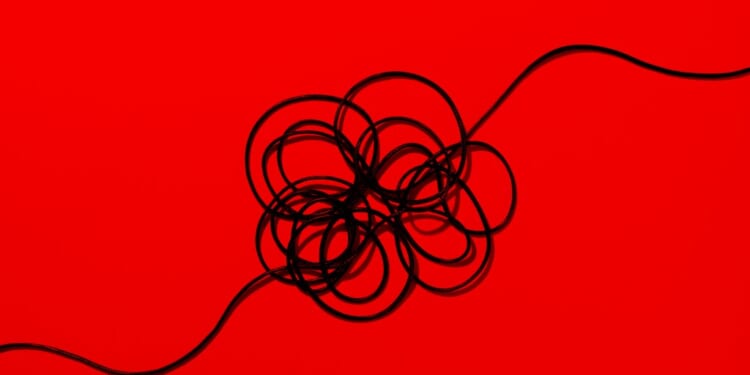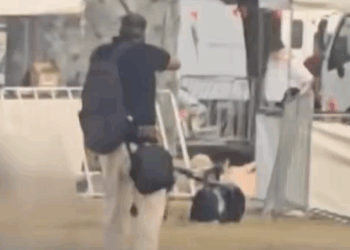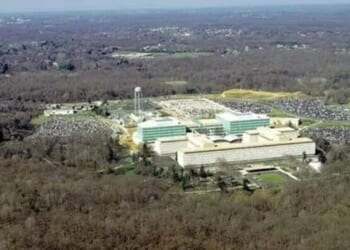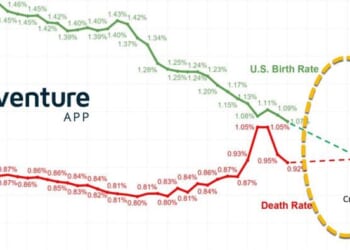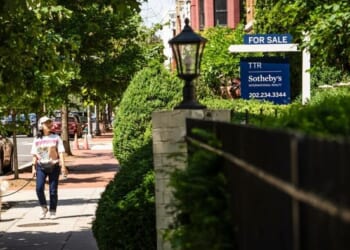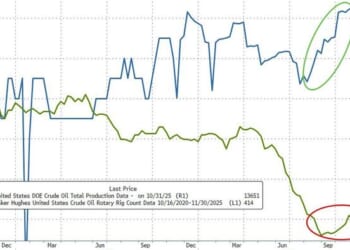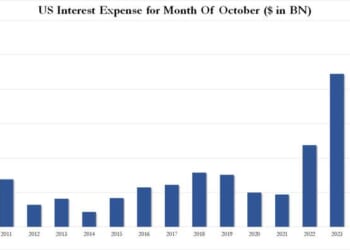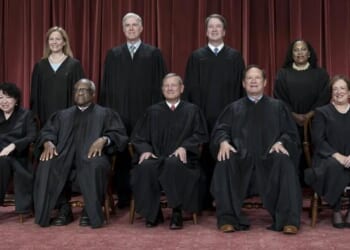
In seeking to understand Charlie Kirk’s murder, politicians and pundits have pointed to a host of issues. The right has pointed to the left’s rhetoric calling President Donald Trump a fascist and warning of the end of democracy. The left has pointed to the right’s own provocative rhetoric, to the administration’s policies, and even to Kirk himself. Others have pointed to more bizarre explanations, from transgender terror cabals to antisemitic conspiracy theories. And while any objective observer can point to irresponsible rhetoric across the political spectrum, ultimately, seeking to find a single, partisan source for escalating violence is an adventure in missing the point.
We need to look for the threads that tie violent actors together regardless of ideology, including Kirk’s killer, the murderer of Minnesota state Rep. Melissa Hortman, the mass shooter at Annunciation Catholic School, and the killer of UnitedHealthcare CEO Brian Thompson. We should also look for threads that connect them to larger outbursts of political violence, including the riots that erupted across the country during the summer of 2020 and the riot at the Capitol on January 6, 2021.
That thread is not political ideology, nor is it abstractions like “polarization” or broad categories like “harsh political rhetoric.” Something else is going on here, and I think the place to begin is with a phenomenon, first described by 20th-century social theorist Hannah Arendt, that has become known as mass loneliness.
Mass loneliness is not simply the experience of isolation. In fact, we experience loneliness most acutely, Arendt says, in the company of others. To be lonely is to feel that we “don’t belong to this world at all,” to find ourselves without a sense of a “common world.” Mass loneliness describes this experience happening at scale, arising as people lost stable bonds with the institutions and traditions that provided a sense of meaning, identity, and purpose, and thus lost a sense of connection with one another.
Philosopher Charles Taylor once described how a person living in the premodern era had a “bundled identity.” Such a person never asked questions like, Am I a Christian or a Buddhist?, What do I want to be when I grow up?, Where will I live?, nor in many cases, Who will I marry? These questions—of religion, vocation, place—were essentially given by virtue of one’s birth. And they were so fixed by the institutions and traditions of the culture that not only was it difficult to break from what one was given, it rarely crossed a person’s mind that things could be different.
The story of modernity is the story of the “unbundling” of that identity. Liberal democratic capitalism freed us to move up or down the socio-economic ladder. Mass transportation and mass emigration transformed our sense of national and tribal identity. The Industrial Revolution transformed our relationship to work. Romanticism, and later the sexual revolution, transformed our understanding of the family. The Protestant Reformation broadened the possibility of not only conversion to a new sect or denomination, but conversion to a new religion entirely, or the rejection of religion altogether.
From one perspective, this unbundling looks like liberty; we are free to pursue a new identity in a variety of ways. But a byproduct of that liberty is anxiety; not only are we free to answer these questions, we must answer them. And even after answers are found, the question remains. You married, but did you marry the right person? Did you choose the right career? Move to the right town? Choose the right religion?
That situational uncertainty finds a parallel in an existential uncertainty. Many of the same factors influencing the unbundling of identity also gave rise to a milieu that Taylor describes as “disenchantment.” This refers to the loss (or at least the severe decline) of any sense of transcendence, and it goes beyond actual religious belief or affiliation. For example, Taylor describes how a pre-modern person had a sense that they lived in a cosmos—a divinely created world full of mystery, overseen by a sovereign God who was carrying out a purposeful drama in history. In modernity, we exchanged the concept of a cosmos for a universe—a cold, random, chaotic, and ever-expanding void.
Such a shift is a fundamental transformation of how we intuit things about the world, how we understand the human condition, how we interpret experiences of suffering or grief. A universe is a much lonelier place than a cosmos.
Disenchantment and the unbundling of our identity help explain how we arrived at the condition Arendt described as mass loneliness. Modern people have thin or fragile bonds to identity-forming institutions like family, nation, vocation, and religion.
To be sure, there are other narratives one could tell about modernity that better acknowledge its benefits. I, for one, am glad not to be picking potatoes 18 hours a day, destined to die at 32 of blood poisoning from, say, an infection I contracted from an ingrown toenail. I like Big Pharma, which recently saved my daughter’s life, and I’m also a big fan of air conditioning, democracy, NFL Sunday Ticket, and DoorDash. But as Thomas Sowell has noted, in our world there are no solutions, only trade-offs. The abundance that came with modernity, and the liberty we’ve inherited that allows us to choose how we worship, who we marry, where we live, and what we do with our lives has also presented us with a world where our ties to institutions are brittle.
And yet, while these aspects of human life have changed, human nature itself has not. As Jonah Goldberg has said, “Human nature has no history.” We are the same as we ever were—creatures who crave a sense of meaning, purpose, and community.
That need for meaning is what drives lonely people into the world of radical ideology, conspiracy theories, and political violence. Perhaps no one has described the experience of loneliness and radicalization better than Chuck Palahniuk in Fight Club, where Tyler Durden, a violent anti-capitalist revolutionary, describes modern men as “… slaves with white collars. … We’re the middle children of history, man. No purpose or place. We have no Great War. No Great Depression. Our Great War is a spiritual war … our Great Depression is our lives.” Tyler helps lonely men feel alive by inviting them to beat the hell out of one another.
It’s a near-perfect allegory for political radicalization. A lonely person, without a sense of meaning or purpose, is drawn into violence not because they’ve been persuaded by ideology, but because they’ve found community.
As Alexander Solzhenitsyn put it, “To do evil, a human being must first of all believe that what he’s doing is good.” Radical ideology does just that. It offers a vision of the future, based on utopianism or nostalgia, in which grievances are resolved and the world is set right. It also delineates the obstacles to that future—whether that be the bourgeoisie, capitalists, “the Jews,” or some other group—and identifies them as necessary targets for marginalization or, in the worst examples, destruction.
In previous eras, when ideologies like these took hold of the lonely masses, they manifested in obvious and often frightening ways. One can study the slow-burning expansion of Nazi ideology in the 1930s, or the long, slow expansion of Marxist revolutionary ideology in Russia in the 19th century, and see the rallies, the street actions, the low-brow thuggery that preceded the larger actions of violence that would eventually cement their movements into power.
To some extent, we’ve seen similar warning signs. From Charlottesville to the most egregious examples of violence in the summer of 2020, to the riot at the Capitol on January 6, 2021, to the “tentifada” protests on college campuses after October 7, 2023—one would be hard-pressed to argue that mob violence isn’t already manifest in the US.
We’ve also had more acute and deadly outbursts of violence, like the murders of Brian Thompson and Charlie Kirk, or the mass shooter at Annunciation Catholic School in Minneapolis. The natural temptation is to see these killings as standalone incidents, part of the larger phenomenon of mass shooters and lone gunmen that is all too familiar in American history.
But many of our social and cultural norms have transformed in the last two decades, especially in the post-COVID years, and we find ourselves “gathering” online to find like-minded communities far more than before. As Nick Pompella has argued, far too often, we find ourselves in groups that indulge our enmities, our darker sides, or our hostilities, and we’re fed data and media by algorithms that don’t love us and don’t want to foster virtue in us; they only want to keep a hold on our attention. The result is a downward spiral into increasingly niche communities that can quickly turn to cesspools.
As a result, I can’t help but wonder if what we’re seeing in these murders is something different—less like the Columbine shooting, where the killers truly were nihilistic, and less like Lee Harvey Oswald or Sirhan Sirhan, political radicals who wanted to make their mark on history. In many of these recent cases, while it appears the killers acted alone, it is also evident that their motivations were informed by online communities. In Reddit forums, Facebook groups, and a variety of other social platforms, they spent months in a soup of conspiracy theories, revolutionary language, or radical ideas that fueled their fractured psyches to commit heinous acts.
In her forthcoming book The Conspiracists, ethnographer Noelle Cook describes the experiences of a number of women who were arrested for participating in the riot on the Capitol on January 6, 2021. In each case, we find a woman with a background of serious trauma and social disconnection before the COVID pandemic of 2020, whose isolation was exacerbated during the lockdowns. The common thread that brought them to Washington, D.C., on January 6 was not ideology, and in many ways, not even Donald Trump’s cult of personality; it was loneliness. Their loneliness drew them into niche, radicalized communities online that had latched on to stolen election hysteria.
These online communities couldn’t have been more disparate. One woman joined the riot because she thought she was ushering in the New World Order through the restoration of Trump to the presidency. Another woman joined because she was a fundamentalist Christian who believed that Trump was on the verge of bringing down a global cabal of elite Jewish pedophiles who controlled the government and the banking system. Donald Trump’s role in the fantastical narratives that led them to the Capitol was almost coincidental; the real tie that bound them together was a loneliness and isolation that drove them to online communities where their moral, spiritual, and political imaginations were radicalized.
In the aftermath of Charlie Kirk’s murder, a refrain has emerged on the right accusing the left of being the primary perpetrators of political violence. That claim isn’t entirely without merit: Apologia for political violence is certainly more mainstream on the left. Campus radicals have no problem wearing shirts and hanging dorm room posters with Che Guevara on them. Frantz Fanon’s apologia for violence is taught by professors of literature, philosophy, political science, sociology, and psychology. Perhaps the most startling apologia for violence from the left was seen in the response to Hamas’ invasion of Israel on October 7, 2023. The subsequent eruption of campus protests, the mainstreaming of genocidal slogans like “Globalize the Intifada,” and the abject failure of academic administrators to safeguard Jews on campus have signaled a high tolerance for political violence (to say nothing of antisemitism).
Yet it’s rich of MAGA influencers to complain about escalating violence when, in January 2025, they applauded Trump’s decision to issue blanket pardons to convicted criminals who took part in a mob that beat cops with flag poles, terrorized Hill staffers, and chanted “Hang Mike Pence.”
The fact is that something has shifted in the cultural atmosphere, and acts of political violence are seen as plausible in a way that they weren’t a few short years ago. Roger Berkowitz, director of the Hannah Arendt Center for Politics and Humanities at Bard College, recently wrote:
Hannah Arendt saw long ago that America has always been fertile ground for violence. In her essay Is America by Nature a Violent Society? she wrote: “It seems true that America, for historical, social and political reasons, is more likely to erupt into violence than most other civilized countries.”
For Arendt, the danger was a paradox: America’s respect for law coexists with a propensity for violence. The very rights that sustain democracy—assembly, protest, political action—also make the country vulnerable to disunity. “Every time Washington is unreceptive to the claims of a sufficiently large number of citizens,” she warned, “the danger of violence arises.”
In the past, it took some effort to assemble a sufficiently large number of disaffected citizens to threaten violence. Today, a mob can form on Facebook or 4chan, radicalize someone simply by sharing rage-bait memes and clips of irresponsible political actors, and erupt in shocking acts of violence that appear isolated, but are actually erupting out of mob sentiment. The mob, being virtual, isn’t visible—but it’s present all the same.
Such violence is “less about politics and revolution and more about rage and resentment,” Berkowitz writes. One can see how true that is by simply listening to polemical rhetoric about “millionaires and billionaires” on one hand and “elites and the deep state” on the other.
The lesson we should be taking from the murder of Charlie Kirk is that it doesn’t require a gathering on the National Mall to foment political violence. Nor does it take organizing a protest after a police shooting. Brian Thompson wasn’t killed when a riot got out of control. Nor were Yaron Lischinsky and Sarah Milgrim, Israeli Embassy workers who were killed on the streets of Washington, D.C., in May. Neither were Harper Moyski, 10, and Fletcher Merkel, 8, who were killed while praying at Annunciation Catholic School in August. They were killed by lone gunmen whose murderous radicalism was fueled online in chat groups, social media channels, and internet forums.
Lots of lonely people are gathering online in an environment of poisonous political rhetoric, dying to give themselves away to something. They’re living with anxiety of an unbundled self and the uncertainty that accompanies it—grasping for a sense of belonging, meaning, purpose, and perhaps most of all, community. Not long ago, the idea that they could find meaning through lawless acts of violence was anathema to most Americans. But the barriers to violence are lowered every time some irresponsible person does a TikTok dance to celebrate the murder of Charlie Kirk, screams that his political enemies are “nothing,” or normalizes the murderous intent of bad actors simply because they’re “on our side.” We need to see these actions for what they are: not merely the posts of random actors, but the collective chants of a mob, inciting violence in the minds of lonely individuals, who are particularly vulnerable to the false promise of meaning and belonging in acts of radicalism and violence. Nothing good comes next.

